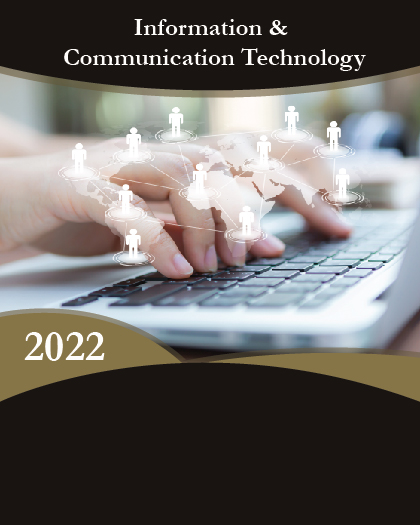
Use location intelligence and community feedback to make data-driven decisions, stay informed and stay connected. The smart community has six core characteristics. Combine the use of the Internet of Things (IoT), big data and inclusive applications to enhance these areas of the organization.
The police department uses smart maps to identify threats so they can take the initiative to avoid trouble. Share information across jurisdictions to improve situational awareness, protect lives and protect property. To manage disease outbreaks and protect their citizens, the Healthy Community analyzes all available known data sets. Communities that enter geographic locations, such as visual medical information, social media reviews, and historical data, are better prepared to take the initiative to fight disease. Communities thrive when they proactively stay ahead of problems. Map IoT outputs, departmental data, and citizen feedback to track infrastructure fatigue and discover how to improve overall livability. Ensure natural resources endure by making long-term development and conservation decisions based on science. Spatial analysis to plan green infrastructure and create an interconnected network of open areas that enrich and sustain the community. Whether stimulating small business or attracting revenue to a tax base, a community's economic potential is tied to place. Web maps show investors the properties, And demographics that make your community a great place for them to live and work. To maximize efficiency, well-run communities, events, such as road resurfacing, through public platforms. Informed citizens can plan to avoid congestion, and local utilities can take The opportunity to inspect their underground assets, reducing future disruptions.
The Smart Communities market revenue was xx Million USD in 2016, grew to xx Million USD in 2020, and will reach xx Million USD in 2026, with a CAGR of xx during 2020-2026.
Global Smart Communities Market Development Strategy Pre and Post COVID-19, by Corporate Strategy Analysis, Landscape, Type, Application, and Leading 20 Countries covers and analyzes the potential of the global Smart Communities industry, providing statistical information about market dynamics, growth factors, major challenges, PEST analysis and market entry strategy Analysis, opportunities and forecasts. The biggest highlight of the report is to provide companies in the industry with a strategic analysis of the impact of COVID-19. At the same time, this report analyzed the market of leading 20 countries and introduce the market potential of these countries.
Major Players in Smart Communities market are:
Huawei
Wipro
Hitachi
Siemens
Ericsson
Accenture
Oracle
ESRI
Toshiba
Honeywell
Schneider Electric
HP
ABB
Cisco
NEC
IBM
Most important types of Smart Communities products covered in this report are:
Smart Community Grid
Smart Community Building
Smart Community Transportation
Smart Community Water
Other
Most widely used downstream fields of Smart Communities market covered in this report are:
Large-Sized City
Medium-Sized City
Other
Top countries data covered in this report:
United States
Canada
Germany
UK
France
Italy
Spain
Russia
China
Japan
South Korea
Australia
Thailand
Brazil
Argentina
Chile
South Africa
Egypt
UAE
Saudi Arabia
Chapter 1 is the basis of the entire report. In this chapter, we define the market concept and market scope of Smart Communities, including product classification, application areas, and the entire report covered area.
Chapter 2 is the core idea of the whole report. In this chapter, we provide a detailed introduction to our research methods and data sources.
Chapter 3 focuses on analyzing the current competitive situation in the Smart Communities market and provides basic information, market data, product introductions, etc. of leading companies in the industry. At the same time, Chapter 3 includes the highlighted analysis--Strategies for Company to Deal with the Impact of COVID-19.
Chapter 4 provides breakdown data of different types of products, as well as market forecasts.
Different application fields have different usage and development prospects of products. Therefore, Chapter 5 provides subdivision data of different application fields and market forecasts.
Chapter 6 includes detailed data of major regions of the world, including detailed data of major regions of the world. North America, Asia Pacific, Europe, South America, Middle East and Africa.
Chapters 7-26 focus on the regional market. We have selected the most representative 20 countries from 197 countries in the world and conducted a detailed analysis and overview of the market development of these countries.
Chapter 27 focuses on market qualitative analysis, providing market driving factor analysis, market development constraints, PEST analysis, industry trends under COVID-19, market entry strategy analysis, etc.
Key Points:
Define, describe and forecast Smart Communities product market by type, application, end user and region.
Provide enterprise external environment analysis and PEST analysis.
Provide strategies for company to deal with the impact of COVID-19.
Provide market dynamic analysis, including market driving factors, market development constraints.
Provide market entry strategy analysis for new players or players who are ready to enter the market, including market segment definition, client analysis, distribution model, product messaging and positioning, and price strategy analysis.
Keep up with international market trends and provide analysis of the impact of the COVID-19 epidemic on major regions of the world.
Analyze the market opportunities of stakeholders and provide market leaders with details of the competitive landscape.
Years considered for this report:
Historical Years: 2016-2020
Base Year: 2020
Estimated Year: 2021
Forecast Period: 2021-2026
























